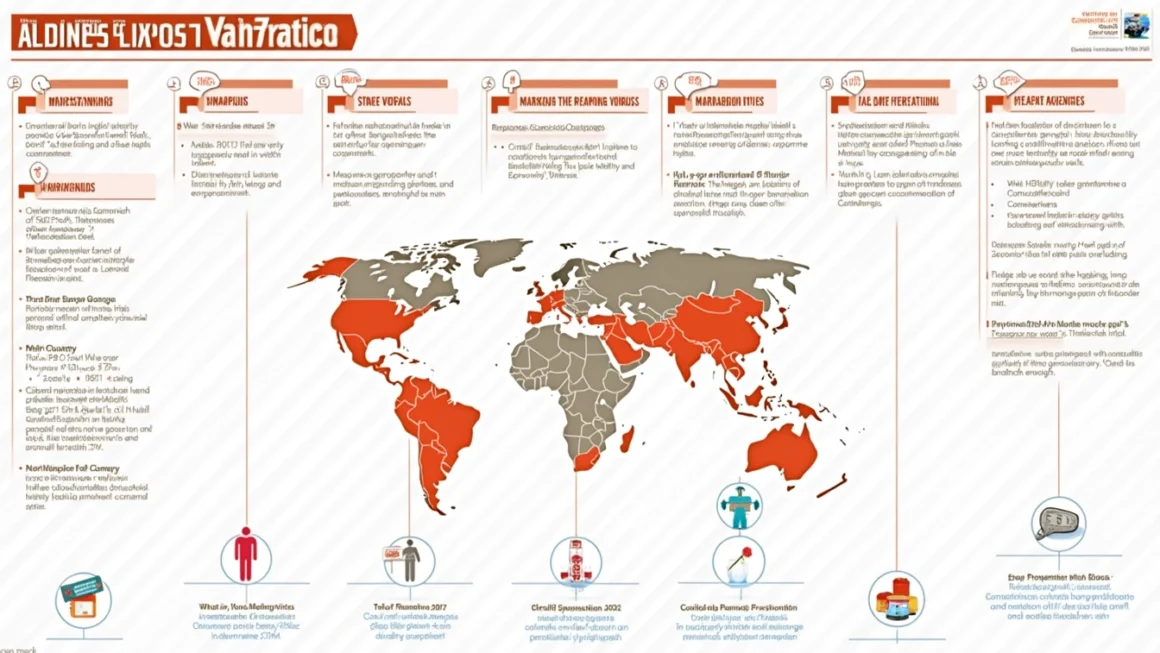Understanding the Marburg Virus Outbreak in Rwanda
Table of Contents
The Marburg virus, a rare and highly deadly virus closely related to Ebola, has recently been identified in an outbreak in Rwanda. This situation has garnered global attention due to the virus’s potential impact on public health. Understanding the nuances of this outbreak and the corresponding response measures is crucial for prevention and containment.
What is the Marburg Virus?
Marburg virus disease is caused by the Marburg virus, a member of the Filoviridae family, which also includes the Ebola virus. This rare virus leads to severe hemorrhagic fever and is fatal in a significant percentage of cases. It is transmitted to humans from fruit bats and spreads through direct contact with the bodily fluids of infected individuals.
Symptoms of Marburg Virus Infection
– Fever
– Severe headache
– Muscle pain
– Vomiting
– Diarrhea
– Bleeding tendencies in severe cases
Detection and early response are critical to controlling the spread of the virus and reducing mortality rates.
The Outbreak Situation in Rwanda
Rwanda is currently grappling with an outbreak of the Marburg virus, prompting international health agencies to respond swiftly. The spread of this virus poses a significant public health challenge due to its contagious nature and high fatality rate. Understanding how this outbreak began and its trajectory is essential for global health security.
Response Strategies and Challenges
– **Initial Response:** Rapid identification and isolation of cases to prevent further spread.
– **Contact Tracing:** Identifying individuals who may have been exposed to the virus for monitoring and quarantine.
– **Public Awareness:** Ensuring communities are informed about how to prevent transmission and what to do if symptoms appear.
– **Resource Allocation:** Provision of necessary medical supplies and personnel to affected areas.
These measures are aimed at curtailing the spread of the virus and mitigating its impact on public health in the region.
Role of International Health Agencies
Global health organizations, such as the World Health Organization (WHO) and Centers for Disease Control and Prevention (CDC), are actively involved in providing assistance and expert guidance to Rwanda. They focus on:
– **Technical Support:** Offering expertise and support in disease tracking and containment measures.
– **Logistical Assistance:** Supplying necessary medical equipment and personal protective gear.
– **Research Collaboration:** Encouraging research on vaccines and treatment options.
By working collaboratively, these agencies aim to control the outbreak and prevent its spread to other regions.
The Importance of a Global Coordinated Effort
The Marburg outbreak in Rwanda highlights the need for a robust and coordinated global health response system. It underscores how rapidly infectious diseases can impact communities and spread across borders if not swiftly managed. Learning from previous outbreaks, such as Ebola, enhances the global community’s ability to respond effectively.
Long-term Preventive Measures
– **Strengthening Health Systems:** Building resilient healthcare infrastructure that can swiftly respond to outbreaks.
– **Vaccination and Research:** Ongoing research for vaccines and new therapeutic measures to control future outbreaks.
– **Global Surveillance Networks:** Enhancing information sharing frameworks to detect and respond to emerging threats rapidly.
For effective global health security, such measures should not only be reactive but also proactive, aiming to prevent outbreaks before they occur.
Conclusion
The Marburg virus outbreak in Rwanda serves as a stark reminder of the threats posed by emerging infectious diseases. With coordinated efforts by national and international agencies, there is hope for controlling this outbreak and preventing future incidents. Individuals and communities are urged to stay informed and participate in preventive measures to help combat the spread. By fostering a culture of vigilance and readiness, the world can better face health challenges now and in the future.
For more insights on health strategies and developments, consider visiting a professional portfolio detailing projects in software development and health technologies for comprehensive innovation insights.




